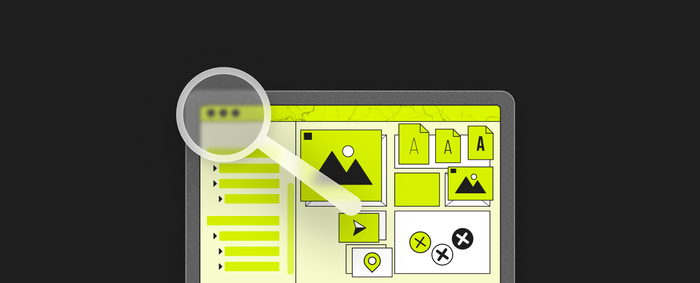European Accessibility Act 2025: What it Means and How to Prepare

Set to take full effect in June 2025, the European Accessibility Act (EAA) is created to make everyday products and services across the EU more inclusive for all people, including those with disabilities, and to help businesses better serve their users. This article explores the key aspects of the Act, its impact on businesses and consumers, how businesses can prepare for this change, and when does the EAA start.
22 April 2025
Max Kościsz
Senior Product Designer

Table of Contents:
- What is the European Accessibility Act?
- Key provisions of the EAA 2025
- Who has to comply?
- When does it all come into effect?
- How will the EAA be enforced?
- What are the consumer accessibility rights?
- How to prepare for the EAA?
- The consequences of non-compliance
- Challenges & criticism
- Benefits of the European Accessibility Act
- Final thoughts
What is the European Accessibility Act?
Inspired by the idea of equality and inclusion outlined by the UN Convention on the Rights of Persons with Disabilities, the European Accessibility Act aims to ensure that millions of Europeans with, or without, disabilities can access goods and services designed with inclusivity in mind. The EAA purpose is to harmonize European accessibility legislation throughout EU member states.
At its core, the Act focuses on universal design principles and solutions that are usable by as many people as possible without the need for special adjustments or adaptations. It introduces specific requirements in two key areas:
- Digital accessibility: websites, mobile apps, and e-commerce platforms must be designed with clear navigation, readable text, and proper color contrast, and compatible with assistive technologies like screen readers.
- Physical accessibility: devices such as ATMs, ticket machines, smartphones, and... lifts must be operable for individuals with various disabilities.
Example: It’s not just people with disabilities who benefit. Many older adults also struggle with navigating online stores that use small fonts or unclear layouts. And when it comes to physical accessibility, lift buttons placed too high aren’t just a problem for wheelchair users; they’re also out of reach for children.
The ultimate goal? A Europe where accessibility is the norm. Without any exceptions.
Key provisions of the EAA 2025
As mentioned above, the European Accessibility Act provisions treat digital and tech accessibility with equal importance. It applies to a broad range of everyday tools, platforms, and services, including:
- Websites and mobile applications.
- E-books and access to audiovisual media (e.g., television or streaming platforms).
- E-commerce platforms, online banking services, ticketing systems, and public transport information systems.
- ATMs, payment terminals, and other self-service devices.
- Electronic communication tools such as email or messaging platforms, and more
It is grounded in four essential principles that align with the Web Content Accessibility Guidelines (WCAG):
- Perceivability: Ensuring content can be perceived by everyone, such as providing text alternatives for images and audio content or enabling text resizing.
- Operability: Allowing users to navigate interfaces using keyboards or assistive technologies.
- Understandability: Using clear language and logical content structure to make information accessible.
- Robustness: Guaranteeing compatibility with various assistive technologies like screen readers.
This means, for example, that a website can be used without a mouse and the self-service terminal doesn't require peculiar motor skills.
The impact of the accessibility compliance law is far-reaching, affecting not only tech companies but also businesses in sectors such as banking, transportation, retail, healthcare, and telecom. Companies will need to reassess their product designs, user interfaces, and customer service approaches to ensure compliance with the European accessibility standards.
Who has to comply?
Everyone, both big companies and small businesses. However... while large enterprises usually have the resources necessary to overcome legal barriers and meet new standards quickly, smaller businesses may struggle due to limited budgets or lack of know-how. That's why the Act acknowledges this disparity by providing certain exemptions for micro-enterprises with fewer than 10 employees and an annual turnover below €2 million (unless compliance does not impose an "undue burden" on them). Still, they are encouraged to voluntarily adopt accessibility standards to remain competitive.
When does it all come into effect?
The European Accessibility Act officially came into force in June 2019, but the big date is June 28, 2025. That’s the deadline for companies to comply with the EAA 2025 rules.
From that point on, most newly introduced products and services in the EU must meet legal accessibility requirements, and existing ones have to be adapted or gradually phased out.
The EAA implementation timeline spans several years:
- 2015: Proposal introduced by the European Commission.
- 2019: Adoption of the directive by European Parliament and EU member states.
- 2022: Deadline for member states to transpose the directive into national law.
- 2025: Final compliance deadline for businesses to meet the accessibility law for new products and services.
- 2030: Transition period ends and all existing products must meet compliance standards by this date.
How will the EAA be enforced?
Each EU member state will appoint enforcement authorities to make sure businesses comply. These authorities will:
- Monitor compliance
- Investigate complaints
- Impose penalties when necessary
The EAA also encourages self-regulation and transparency. Companies are expected to design accessible products from the start (this is called "accessibility by design"), implement disability-friendly policies, and document how they’re meeting the requirements. Not only to avoid fines, but more to show their customers and clients that they care.
What are the consumer accessibility rights?
The EAA doesn’t just set standards for businesses or e-commerce accessibility; it also empowers consumers. If a product or service isn’t accessible, people have the right to file complaints and expect improvements.
Consumers will be able to:
- Report accessibility issues to national authorities
- Request alternative formats (like audio versions or easy-read summaries)
- Expect timely responses and concrete actions when something doesn’t meet the required standard
How to prepare for the EAA?
June 2025 is on the horizon, so the best moment to start is now. Here’s how businesses can get ready:
- Audit your products and services to identify accessibility barriers users might face. Accessibility audits include checking for screen reader compatibility, font size options, alternative text on images, and ease of navigation.
- Talk to real users and involve people with different types of disabilities in the testing process.
- Train your team, since accessibility is a shared responsibility from developers to designers and customer service reps.
- Stay up to date, follow guidelines like the Web Content Accessibility Guidelines (WCAG), and keep an eye on national updates to the Act.
Remember: Accessibility isn’t a checkbox. It’s a mindset, and a chance to build better experiences for everyone.
The consequences of non-compliance
Failing to comply with the European Accessibility Act can have serious effects on businesses across Europe. Non-compliance may result in hefty penalties, imposed by national authorities within each member state, that could significantly impact a company’s financial health. Additionally, they may be required to withdraw inaccessible products from the market or stop offering non-compliant services altogether.
Challenges & criticism
Despite its positive intentions, the EAA poses challenges for businesses, particularly smaller ones that may face financial constraints, lack the resources or technical expertise required to implement accessibility measures effectively. That's why critics argue that compliance costs could lead to standardization issues, higher product prices, or strain organizational budgets.
However, proponents emphasize that these investments will pay off in the long run through increased customer loyalty and expanded market reach.
Benefits of the European Accessibility Act
The EAA promises substantial benefits that extend far beyond compliance. From an economic perspective, improving products and customer services accessibility opens up markets to the 87 million Europeans with disabilities, representing a purchasing power of over €500 billion. Besides, businesses that embrace accessibility often discover that inclusive design benefits all users, not just those with disabilities.
Final thoughts
The European Accessibility Act is more than a legal requirement. It’s a statement about the open, fair, and inclusive society we want to build. By making accessibility a core part of the strategy, companies are not just avoiding trouble, but they are doing the right thing. And in the long run, that’s always good for business.
June 2025 is coming. Let’s be ready.

